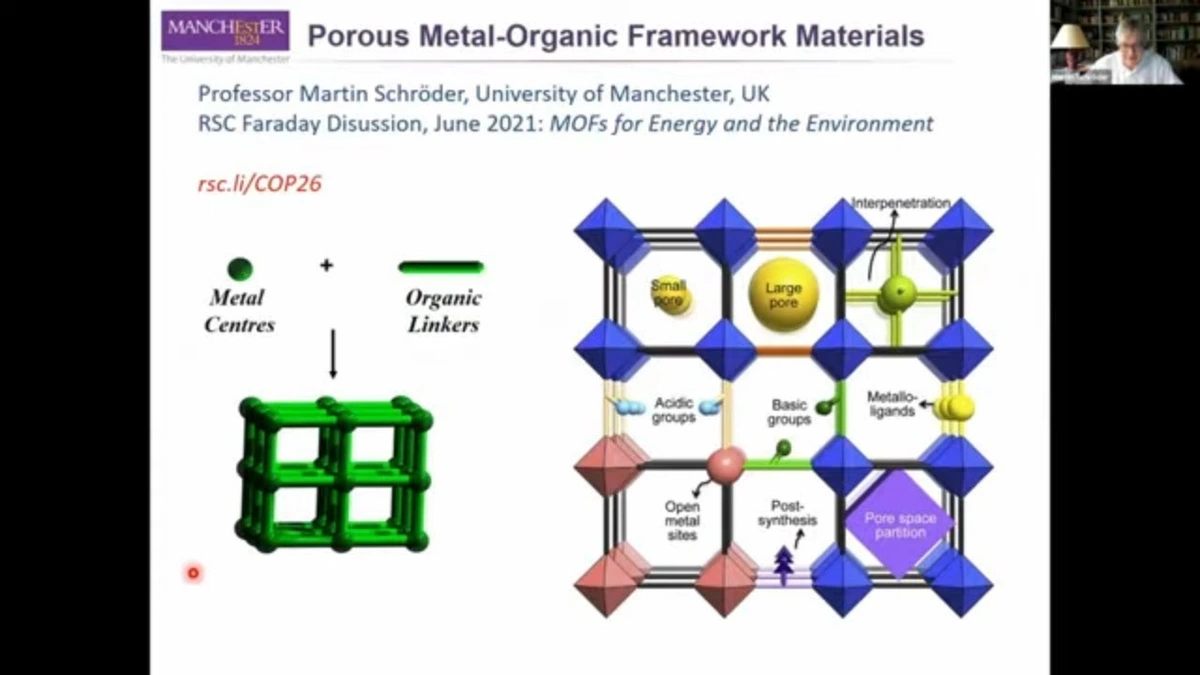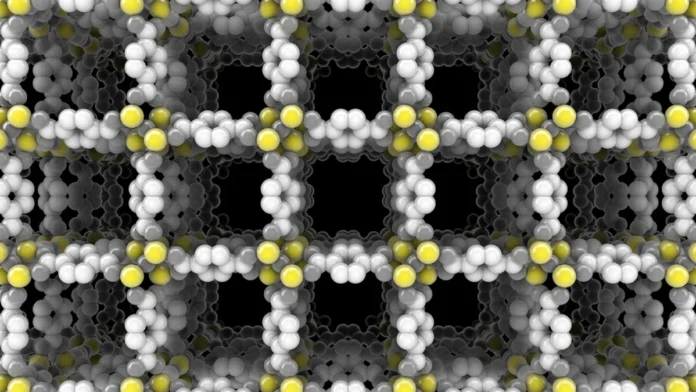Okay, so a Nobel Prize has been awarded for the development of metal-organic frameworks (MOFs). Big deal, right? Wrong! What fascinates me is not just that these things exist, but the sheer potential they hold. Forget everything you think you know about chemistry for a second. This isn’t just about beakers and bubbling liquids; it’s about creating materials so porous, so adaptable, they could revolutionize everything from carbon capture to drug delivery.
We are diving deep into the “why” behind this achievement – why it matters, and why you should care, even if you haven’t touched a chemistry textbook since school. Let’s be honest, most news reports will give you the “what.” We’re going for the “so what?”
What Exactly Are Metal-Organic Frameworks?

Imagine a super-tiny, incredibly intricate Lego structure. That’s a simplified way to think about MOFs. They’re essentially crystalline materials built from metal ions or clusters connected by organic linker molecules. The magic lies in the resulting structure – a highly porous framework with an enormous internal surface area. Think of it like a sponge, but on an atomic scale. This allows MOFs to absorb, store, and release molecules in a highly controlled manner. According to research published on Wikipedia , some MOFs have surface areas exceeding 10,000 m2/g.
MOF materials are like tiny cages, and these cages can trap specific molecules, separate gases, or even catalyze chemical reactions. The beauty of it all? We can design and fine-tune MOFs to target specific applications. Think custom-built solutions for some of the world’s biggest problems.
Why This Nobel Prize Matters for India (and the World)
Here’s the thing: this Nobel Prize isn’t just an academic pat on the back. It’s a recognition of technology with the potential to transform industries and improve lives, particularly in a country like India. Here’s why . Consider these potential impacts:
- Carbon Capture: India faces immense challenges related to air pollution and climate change. MOFs could be used to capture carbon dioxide from industrial emissions or even directly from the atmosphere, turning a greenhouse gas into a valuable resource.
- Water Purification: Access to clean water is a critical issue. MOFs can selectively remove pollutants from water, offering a cost-effective and energy-efficient solution for water purification. Imagine decentralized water treatment systems using MOFs, bringing clean water to even the most remote villages.
- Drug Delivery: Targeted drug delivery is the holy grail of modern medicine. MOFs can encapsulate drugs and release them at specific sites in the body, maximizing therapeutic effects and minimizing side effects. This could revolutionize the treatment of diseases like cancer.
- Gas Storage: Imagine vehicles running on natural gas or hydrogen, stored safely and efficiently in MOF tanks. This could reduce our dependence on fossil fuels and promote cleaner transportation options. The possibilities of using gas storage materials are enormous.
These are just a few examples. The applications of MOF technology are vast and constantly expanding. The Nobel Prize shines a spotlight on this field, attracting more research funding, fostering innovation, and accelerating the development of real-world solutions.
The Challenges Ahead | From Lab to Reality
Let’s not get carried away just yet. While MOFs hold immense promise, there are still challenges to overcome before they can be widely adopted. MOF synthesis can be expensive, and some MOFs are unstable in the presence of moisture or air. Scaling up production to meet industrial demands is another hurdle. But here’s the exciting part: researchers are actively working to address these challenges. New synthesis methods are being developed, more stable MOFs are being designed, and pilot plants are being built to demonstrate the feasibility of large-scale production.
And, the more accessible and cost-effective these become, the more ubiquitous their use. Consider the use of porous materials in lithium-ion battery technology.
The Indian Perspective | Opportunities and Potential
India has a unique opportunity to become a leader in MOF research and development. With a large pool of talented scientists and engineers, a growing economy, and pressing environmental challenges, the country is well-positioned to harness the potential of MOFs. Government support, industry collaboration, and international partnerships will be crucial for success. As per the latest scientific research , there are more developments in the field than ever before.
What fascinates me is the intersection of scientific innovation and societal impact. MOFs are not just about molecules and crystals; they’re about solving real-world problems and improving the lives of people around the globe.
Looking Ahead | The Future is Porous
The Nobel Prize for MOF development marks a significant milestone, but it’s just the beginning. As research continues and technology advances, we can expect to see MOFs playing an increasingly important role in various aspects of our lives. From cleaner air and water to more efficient energy storage and targeted drug delivery, the possibilities are endless. The future, quite literally, is porous.
FAQ About Metal-Organic Frameworks
What are the key advantages of using MOFs?
MOFs offer high surface area, tunable structures, and the ability to selectively adsorb specific molecules, making them ideal for various applications.
What are some of the current limitations of MOF technology?
Challenges include cost of synthesis, stability issues in certain environments, and the need for scaled-up production methods.
How is India positioned to benefit from MOF research?
India can leverage its scientific talent and growing economy to address environmental challenges and become a leader in MOF innovation.
What are some potential future applications of MOFs?
Future applications include advanced sensors, catalysis, and gas separation technologies.
Are MOFs environmentally friendly?
The environmental impact of MOFs depends on their synthesis and application. Research is focused on developing more sustainable MOFs.
How can I learn more about metal-organic frameworks?
Explore scientific journals, attend conferences, and follow research groups working in the field.
In conclusion, the application of MOFs is a growing field and the potential impact on society is enormous. A good understanding of this technology is an advantage in the modern world.




